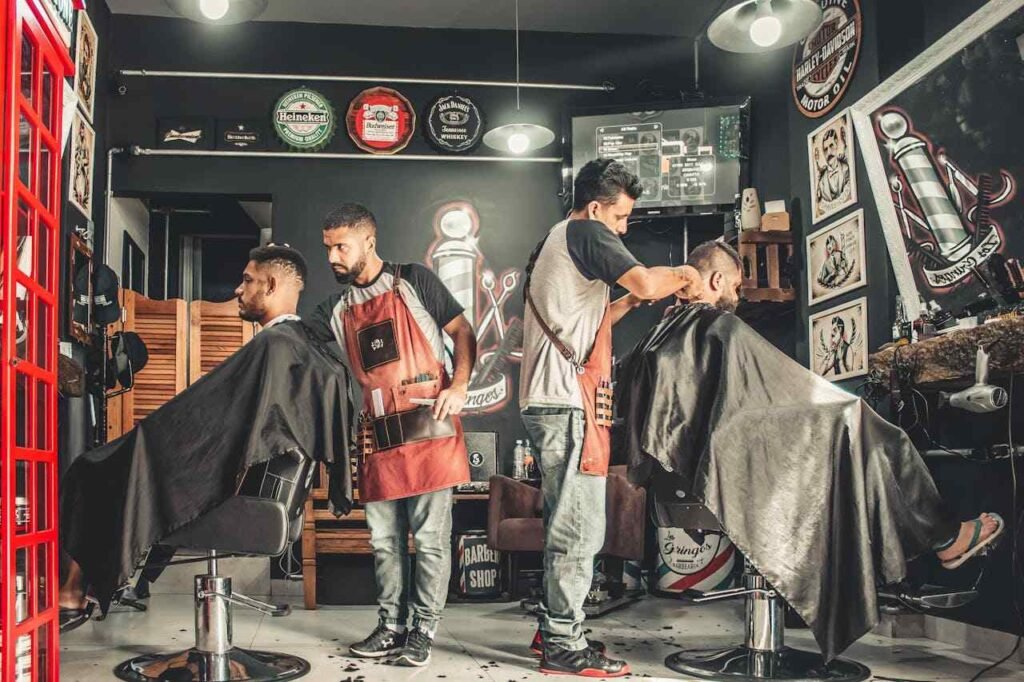In today’s fast-paced digital world, standing out on social media is more important than ever. With endless content vying for attention, your design needs to be eye-catching and memorable. Whether you’re a small business, a startup, or an individual looking to enhance your social media presence, having compelling designs can make a significant difference. In this article, we’ll explore creative and effective social media design ideas that will captivate your audience and boost engagement.
Understanding the Basics of Social Media Design

Understanding the basics of social media design is essential for creating content that not only looks good but also effectively communicates your brand’s message. For startup founders, mastering these basics can set the foundation for a compelling and consistent social media presence. Here are some strategic and actionable tips to enhance your social media design skills.
Establishing a Strong Brand Identity
A strong brand identity is crucial for distinguishing your business in the crowded social media landscape. Here’s how to build and maintain a cohesive brand identity:
Define Your Brand Elements: Clearly define your brand’s visual elements, including your logo, color palette, typography, and imagery style. Create a brand style guide that outlines these elements and provides guidelines on how to use them consistently across all social media platforms.
Consistent Visual Themes: Use consistent visual themes in your posts. This means maintaining a uniform look and feel in terms of color schemes, fonts, and overall design. For example, if you use a specific color for your backgrounds, stick with it to create a recognizable pattern.
Voice and Tone: Ensure that your visual design aligns with your brand’s voice and tone. If your brand is playful and fun, use bright colors and whimsical fonts. If your brand is more serious and professional, opt for muted colors and clean, straightforward typography.
Visual Hierarchy
Visual hierarchy is the arrangement of elements in a way that guides the viewer’s eye to the most important information first. Here’s how to effectively implement visual hierarchy:
Use Size and Scale: Make the most important elements larger and more prominent. For example, your main message or call-to-action should be the most noticeable part of your design.
Contrast and Color: Use contrast to highlight key information. Dark text on a light background or vice versa can make your message stand out. Use your brand colors to draw attention to important elements.
Positioning and Alignment: Place crucial elements where they are most likely to be seen. Typically, viewers start at the top left corner of an image and move diagonally to the bottom right. Align elements in a way that follows this natural reading pattern.
Effective Use of White Space
White space, or negative space, is the area around and between design elements. It is crucial for creating balanced and visually appealing designs:
Avoid Clutter: Don’t cram too much information into one post. Use white space to separate different elements, making your content easier to read and more visually appealing.
Focus on Key Messages: Use white space to draw attention to your key messages. By surrounding important text or images with white space, you make them stand out more.
Balance and Harmony: Ensure that your design is balanced. White space helps create a sense of harmony and ensures that no single element overwhelms the rest of the design.
Typography Best Practices
Typography is a critical aspect of social media design that affects readability and overall aesthetics. Here are some best practices for using typography effectively:
Font Pairing: Choose complementary fonts that work well together. Typically, you’ll use one font for headings and another for body text. Ensure they are distinct yet harmonious.
Readability: Ensure that your fonts are easy to read, even on small screens. Avoid overly decorative fonts for large bodies of text and use them sparingly for headings or accents.
Consistency: Be consistent with your typography choices. Use the same fonts across all your social media platforms to maintain a cohesive look.
Visual Content Strategy
A well-thought-out visual content strategy can significantly enhance your social media presence:
Plan Ahead: Create a content calendar to plan your posts in advance. This ensures that your content is timely and relevant, and helps maintain consistency in your visual style.
Diverse Content Types: Use a mix of content types to keep your audience engaged. This can include photos, videos, infographics, and GIFs. Each type of content should adhere to your brand’s visual guidelines.
Storytelling: Use visual storytelling to connect with your audience on a deeper level. Share behind-the-scenes looks, customer stories, and brand milestones through compelling visuals.
Accessibility in Design
Making your social media designs accessible ensures that all users, including those with disabilities, can engage with your content:
Alt Text: Use alt text for images to describe what’s in the picture. This helps visually impaired users understand your content.
High Contrast: Ensure there is enough contrast between text and background colors to make your content readable for everyone, including those with visual impairments.
Captioning Videos: Include captions in your videos so that people who are deaf or hard of hearing can understand the audio content.
Advanced Tips for Startup Founders
For startup founders, leveraging social media design can be a game-changer. Here are some advanced tips:
Data-Driven Design Decisions: Use analytics to understand what types of visual content perform best. Adjust your designs based on what drives the most engagement.
Custom Illustrations: Invest in custom illustrations that align with your brand’s identity. Unique visuals can set you apart from competitors who rely on generic stock images.
Brand Ambassadors: Encourage employees and satisfied customers to share your content. This user-generated content can provide authentic endorsements and help amplify your brand’s reach.
Emerging Technologies: Stay updated with emerging technologies like augmented reality (AR) filters and virtual reality (VR) experiences. These can provide innovative ways to engage your audience.
Mastering the basics of social media design is essential for creating compelling and effective content. By focusing on brand identity, visual hierarchy, white space, typography, and accessibility, startup founders can develop a strong and cohesive social media presence that resonates with their audience. Incorporating advanced strategies and staying adaptable to new trends will further enhance the impact of your social media efforts.
Creative Design Ideas for Social Media
Creating eye-catching and engaging content for social media requires a mix of creativity, strategy, and understanding of your audience. For startup founders, leveraging innovative design ideas can help differentiate your brand and build a strong online presence. Here are more unique and strategic design ideas to enhance your social media efforts.
Incorporating User-Generated Content (UGC)
User-generated content can be a powerful way to build community and trust.
Encourage and Showcase UGC: Actively encourage your customers to share their experiences with your products or services on social media. Create a branded hashtag and promote it across your channels. Repost UGC on your profiles, giving credit to the original creators. This not only provides you with authentic content but also makes your customers feel valued.
UGC Contests: Run contests that encourage your audience to create and share content related to your brand. For example, ask them to post photos using your product and tag your account. Offer a prize for the best entry to incentivize participation.
Customer Stories: Feature detailed stories from your customers about how they use your products or services. This can be in the form of video testimonials, written posts, or photo series. Highlighting real experiences helps potential customers relate to your brand.
Utilizing Seasonal and Trending Themes
Capitalizing on seasonal events and trending topics can make your content more relevant and engaging.
Seasonal Designs: Create content that aligns with different seasons and holidays. For example, use festive colors and themes during the holidays, or create summer-themed posts that highlight relevant products or services. Seasonal content can boost engagement as it resonates with what’s currently on your audience’s mind.
Trending Hashtags: Stay updated on trending hashtags and incorporate them into your content when relevant. This can increase your visibility and attract new followers who are interested in those topics.
Timely Campaigns: Plan and execute timely campaigns around major events or social media trends. For instance, if there’s a popular new challenge on TikTok, find a way to participate that aligns with your brand’s voice and style.
Interactive Content
Interactive content can significantly increase engagement by involving your audience directly.
Interactive Stories: Use Instagram and Facebook Stories to create polls, quizzes, and question stickers. This not only engages your audience but also provides valuable insights into their preferences and opinions.
360-Degree Photos and Videos: Incorporate 360-degree photos and videos to offer an immersive experience. This can be particularly effective for showcasing your office, events, or product features.
Shoppable Posts: On platforms like Instagram and Facebook, use shoppable posts to make it easy for your audience to purchase products directly from your social media content. Tag products in your images and videos to streamline the buying process.
Creative Collaborations
Collaborating with influencers and other brands can expand your reach and bring fresh content to your audience.
Influencer Takeovers: Partner with influencers for social media takeovers, where they post content on your behalf for a day. This can introduce your brand to their followers and provide a new perspective to your content.
Brand Partnerships: Collaborate with complementary brands on joint campaigns. For example, if you’re a fitness brand, partner with a health food company to create co-branded content that appeals to both of your audiences.
Guest Posts: Invite industry experts or satisfied customers to create guest posts for your social media. This can add credibility to your content and provide valuable information to your followers.
Dynamic Visual Content
Dynamic content such as animations and motion graphics can capture attention more effectively than static images.
Animated Posts: Use tools like Adobe After Effects or simple platforms like Canva to create animated posts. These can be short GIFs or looped animations that highlight key features of your products or announce new updates.
Cinemagraphs: Cinemagraphs are still photos with a minor and repeated movement, which can be a captivating way to draw attention to specific elements of your image. This subtle motion can make your content stand out in a feed full of static images.
Live Content: Use live streaming on platforms like Facebook, Instagram, or YouTube to engage with your audience in real-time. Live Q&A sessions, product demonstrations, or behind-the-scenes tours can make your followers feel more connected to your brand.
Storytelling Through Carousels
Carousels allow you to tell a story or share detailed information through a series of images or videos in a single post.
Step-by-Step Guides: Create carousel posts that guide your audience through a process or explain a concept step-by-step. This format is excellent for tutorials, recipes, or how-to content.
Before and After: Showcase transformations with before-and-after carousels. This can be particularly effective for fitness, beauty, or home improvement brands.
Series Posts: Develop a series of connected posts that explore a topic in depth. For example, a week-long series on “Healthy Eating Habits” with each carousel post focusing on a different aspect, such as meal planning, snack ideas, and grocery shopping tips.
Personalization
Personalized content can make your audience feel special and more connected to your brand.
Personalized Messages: Send personalized thank-you messages to new followers or customers. Use their names and mention specific details to show that you value their support.
Segmented Content: Tailor your content to different segments of your audience. For example, create different posts for new customers, loyal customers, and potential customers. Use targeted ads to ensure the right content reaches the right people.
Customer Milestones: Celebrate your customers’ milestones, such as anniversaries of their first purchase or their birthday. Personalized posts or messages can enhance customer loyalty.
Creating engaging and eye-catching social media content requires a mix of creativity, strategy, and an understanding of your audience. By incorporating user-generated content, leveraging seasonal and trending themes, utilizing interactive content, collaborating with influencers and other brands, creating dynamic visual content, telling stories through carousels, and personalizing your approach, you can significantly enhance your social media presence. These strategies will help you build a strong, engaging, and memorable brand that stands out in the crowded social media landscape.
Leveraging Colors and Fonts
Colors and fonts are fundamental elements of social media design that significantly impact how your content is perceived. For startup founders, understanding and strategically using these elements can help build a recognizable and cohesive brand. Here’s how to leverage colors and fonts effectively to enhance your social media presence.
Strategic Use of Color
Colors can evoke emotions and convey messages without words. Here’s how to use color strategically in your social media designs:
Understand Color Psychology: Different colors evoke different emotions and reactions. For example, blue is often associated with trust and professionalism, making it a good choice for corporate brands. Yellow can evoke feelings of happiness and optimism, suitable for more casual or fun brands. Understanding these associations can help you choose colors that align with your brand’s personality.
Create a Color Palette: Develop a cohesive color palette for your brand. Choose a primary color that represents your brand, secondary colors that complement the primary color, and accent colors for highlights and calls to action. Use tools like Adobe Color to create and refine your palette. Stick to this palette consistently across all your social media platforms.
Contrast and Readability: Ensure there is enough contrast between your text and background colors to make your content easily readable. For example, use dark text on a light background or light text on a dark background. High contrast improves readability and makes your content more accessible.
Seasonal and Campaign Colors: Occasionally, you might want to introduce new colors for seasonal campaigns or special events. For instance, use red and green during the holiday season or pastels in the spring. While doing this, ensure these colors still complement your main brand palette to maintain overall cohesion.

Advanced Color Strategies
For startup founders looking to take their color strategy to the next level, consider these advanced techniques:
Color Gradients: Use color gradients to add depth and visual interest to your designs. Gradients can make your posts stand out and look more modern. Tools like Gradient Hunt can help you find beautiful gradient combinations.
Color Blocking: Color blocking involves using large blocks of solid colors in your design. This technique can create a bold and dynamic look. Use it to highlight important information or to create visual breaks in your content.
Cultural Relevance: Be aware of the cultural meanings and implications of colors, especially if your brand has a global audience. Colors can have different meanings in different cultures, so ensure your color choices are appropriate for your target market.
Mastering Typography
Fonts play a crucial role in your design’s readability and aesthetic appeal. Here’s how to strategically use typography in your social media content:
Font Selection: Choose fonts that reflect your brand’s personality. For a professional and clean look, sans-serif fonts like Helvetica or Arial are great choices. For a more traditional and formal feel, serif fonts like Times New Roman or Georgia might be appropriate. Ensure the fonts you choose are legible on both desktop and mobile devices.
Font Pairing: Use font pairing to create a hierarchy in your design. Typically, you’ll use one font for headings and another for body text. Pairing a bold, decorative font for headings with a simple, readable font for body text can create an attractive and balanced look. Tools like FontPair can help you find complementary font combinations.
Consistent Typography: Maintain consistency in your font usage across all your social media platforms. This consistency reinforces your brand identity and makes your content instantly recognizable.
Hierarchy and Emphasis: Use different font sizes, weights, and styles to create a hierarchy and emphasize important information. For instance, use a larger, bolder font for headings and a smaller, lighter font for subheadings and body text. Italics and bold can be used sparingly to draw attention to key points.
Advanced Typography Techniques
For a more sophisticated approach to typography, consider these advanced techniques:
Custom Fonts: If your budget allows, consider creating or commissioning a custom font. Custom fonts can set your brand apart and give your content a unique look. Just ensure the custom font remains legible and versatile.
Kinetic Typography: Incorporate kinetic typography (animated text) in your videos and GIFs. Moving text can grab attention and emphasize important messages. Tools like Adobe After Effects can help you create kinetic typography animations.
Font Licensing: Ensure you have the proper licenses for any fonts you use, especially if you’re using premium fonts. Unauthorized use of fonts can lead to legal issues and damage your brand’s reputation.
Color and Font Integration
Effectively integrating colors and fonts can enhance your social media content’s overall impact:
Brand Templates: Create branded templates for different types of social media posts. Include your chosen color palette and fonts in these templates to ensure consistency. Use these templates for regular posts, stories, and ads.
Mood Boards: Develop mood boards that combine your colors, fonts, and imagery. Mood boards help visualize how these elements work together and ensure a cohesive brand aesthetic.
A/B Testing: Conduct A/B tests to see how different color and font combinations perform. For example, test two versions of a post with different color schemes or font choices to determine which one resonates more with your audience. Use the insights to refine your design strategy.
Responsive Design: Ensure your designs are responsive and look good on all devices. Test your posts on different screen sizes to make sure fonts are legible and colors appear as intended. Use responsive design principles to create flexible layouts that adapt to various screen dimensions.
Designing for Different Platforms

Each social media platform has its own unique features, audience demographics, and best practices for content. For startup founders, understanding these differences is crucial to maximize engagement and reach. Here’s how to strategically design for various social media platforms.
Instagram is a visually-driven platform where aesthetics and high-quality visuals are paramount. Here’s how to make the most of your Instagram presence:
Consistent Theme: Develop a consistent theme for your Instagram feed. This can be achieved through a cohesive color palette, filter usage, and overall style. Tools like Planoly or Preview can help you plan your grid to ensure a visually pleasing layout.
Use Stories and Highlights: Instagram Stories are a great way to share temporary, engaging content. Use features like polls, questions, and countdowns to interact with your audience. Create Highlights to save and categorize your best Stories, making them accessible long-term.
Engaging Captions: While Instagram is primarily visual, captions are still important. Use engaging, conversational captions that encourage interaction. Ask questions, use emojis, and include a call-to-action (CTA) to boost engagement.
Utilize IGTV and Reels: IGTV is perfect for longer video content, while Reels are great for short, engaging clips. Use these features to showcase behind-the-scenes footage, tutorials, or fun, creative content that aligns with trending topics.
Facebook supports a wide range of content types and is ideal for building community and engagement. Here’s how to optimize your designs for Facebook:
Diverse Content: Post a mix of content types, including images, videos, live streams, and links to your blog or website. This keeps your audience engaged and caters to different preferences.
Optimized Visuals: Ensure your visuals are optimized for Facebook’s image dimensions to avoid cropping or pixelation. Use high-resolution images and consider creating carousel posts to showcase multiple images in one post.
Engaging Videos: Videos on Facebook tend to perform well, especially when they include captions for viewers who watch without sound. Use Facebook’s video features to post tutorials, customer testimonials, or product demos.
Interactive Features: Utilize Facebook’s interactive features like polls, live Q&A sessions, and events to engage with your audience in real-time. Encourage participation to build a sense of community.
Twitter’s fast-paced environment requires concise and impactful content. Here’s how to design for Twitter:
Bold and Clear Graphics: Use bold graphics with clear, concise text. Given the limited character count, ensure that any text on your images is easily readable and to the point.
Hashtags and Mentions: Incorporate relevant hashtags to increase visibility and reach. Mention influencers or brands when relevant to tap into their audience and encourage retweets.
Engaging GIFs and Short Videos: Twitter users love quick, engaging content. Use GIFs and short videos to capture attention and convey your message quickly. Tools like Giphy can help create custom GIFs.
Pinned Tweets: Pin important tweets to the top of your profile to highlight key messages or announcements. This ensures new visitors see your most important content first.
LinkedIn is a professional network, so your content should reflect a more polished and informative style. Here’s how to tailor your designs for LinkedIn:
Professional Imagery: Use high-quality, professional images that reflect your brand’s expertise. Avoid overly casual or gimmicky visuals that might detract from your professional image.
Informative Content: Share informative content such as industry insights, case studies, and thought leadership articles. Use well-designed infographics and slide decks to present complex information in an easily digestible format.
Video Content: LinkedIn users appreciate informative and educational video content. Share webinars, expert interviews, or behind-the-scenes looks at your company. Ensure your videos are professionally produced and add subtitles for accessibility.
Company Page Optimization: Optimize your LinkedIn company page with a professional cover image, detailed description, and regular updates. Encourage employees to share and engage with your content to increase reach.
Pinterest is a visual discovery platform where content is often discovered through searches. Here’s how to design effectively for Pinterest:
Vertical Images: Use vertical images with a 2:3 aspect ratio, as they perform best on Pinterest. Ensure your images are high-resolution and visually appealing.
Rich Pins: Utilize Rich Pins to provide more context about your content. These can include product information, recipes, or articles, making your pins more informative and engaging.
Eye-Catching Graphics: Create eye-catching graphics that stand out in feeds. Use bold colors, clear fonts, and attractive images. Adding text overlays can help explain the content of the pin at a glance.
Organized Boards: Organize your pins into relevant boards with clear, descriptive titles. This helps users find your content easily and encourages them to follow your boards.
TikTok
TikTok is all about short, engaging videos that capture attention quickly. Here’s how to create effective content for TikTok:
Trendy Content: Stay on top of trends and challenges. Creating content that aligns with current trends can boost your visibility and engagement.
Authentic and Fun: TikTok users appreciate authenticity. Create fun, relatable content that showcases the human side of your brand. Behind-the-scenes clips, employee spotlights, and user-generated content work well.
Captions and Hashtags: Use captions and hashtags to increase discoverability. Keep captions concise and include relevant hashtags to reach a broader audience.
Engage with Trends: Participate in trending challenges or create your own. Engaging with trends can increase your visibility and help your content go viral.
Platform-Specific Optimization
For each platform, continuously analyze performance and optimize accordingly:
Monitor Metrics: Use the analytics tools provided by each platform to track engagement, reach, and other key metrics. Understand what types of content perform best and tailor your strategy based on these insights.
A/B Testing: Experiment with different design elements, posting times, and content types to see what works best for each platform. Conduct A/B tests to refine your approach and maximize engagement.
Adapt to Changes: Social media platforms frequently update their features and algorithms. Stay informed about these changes and adjust your strategy to take advantage of new opportunities.
Conclusion
Creating eye-catching social media designs is crucial for capturing your audience’s attention and effectively communicating your brand’s message. As a startup founder, understanding the nuances of each platform and strategically leveraging colors, fonts, and unique design elements can set your brand apart in a crowded digital space.
By mastering the basics of social media design, incorporating user-generated content, staying updated with seasonal and trending themes, and using advanced design tools, you can create compelling and engaging content. Tailoring your designs to fit the unique features and audience preferences of each social media platform ensures that your content is both relevant and impactful.
Read Next:




















